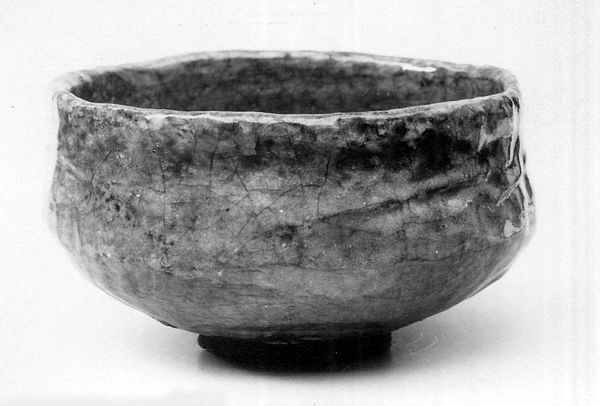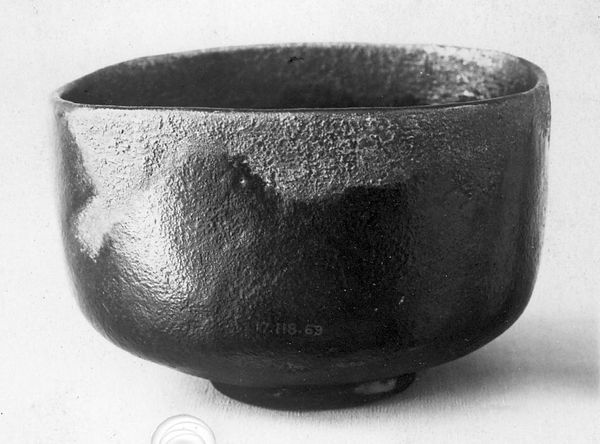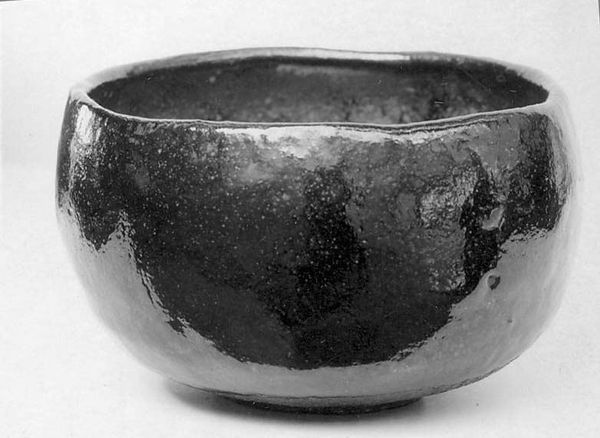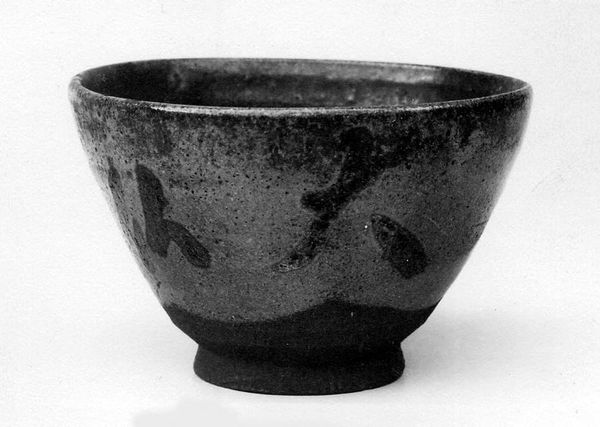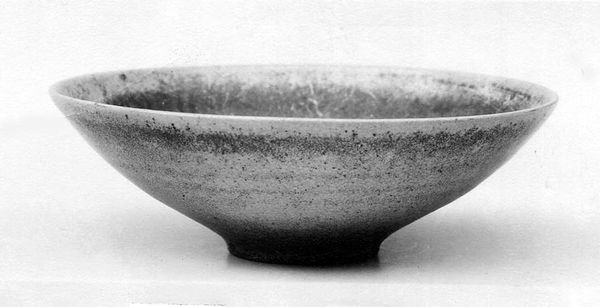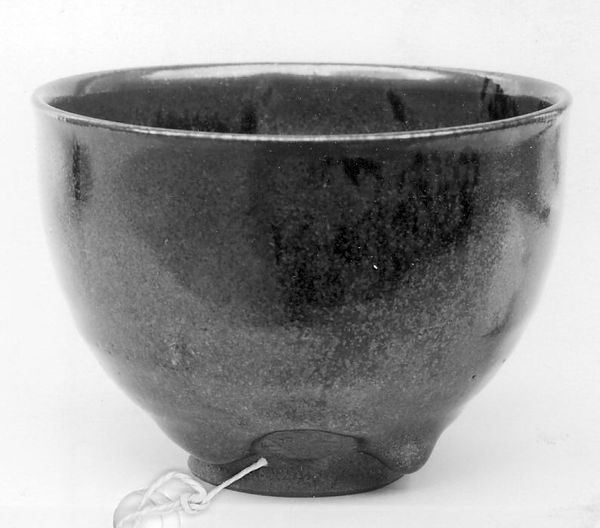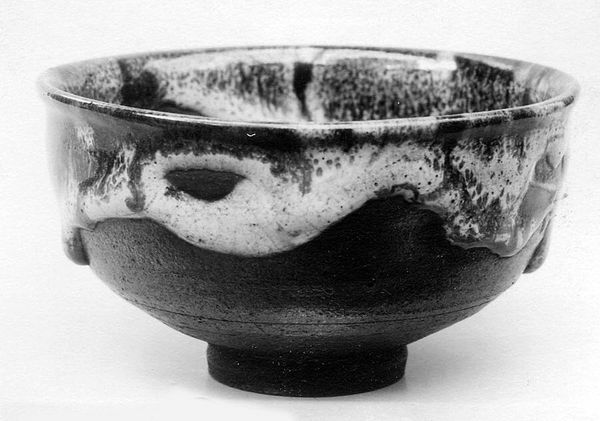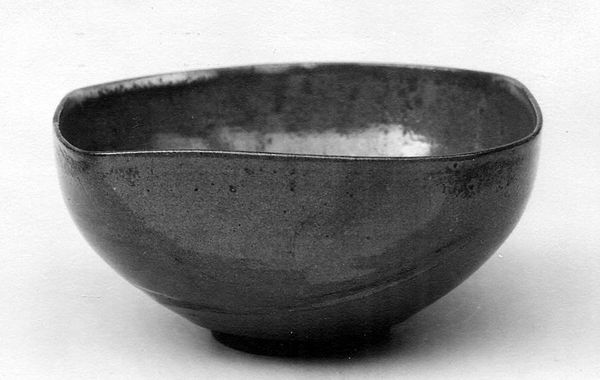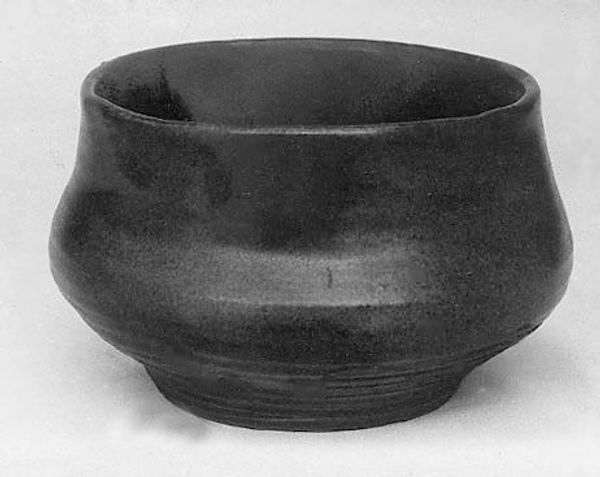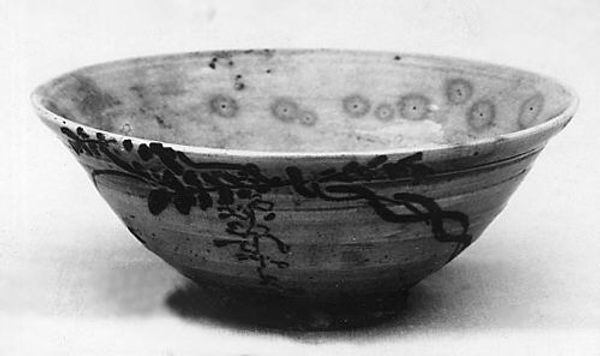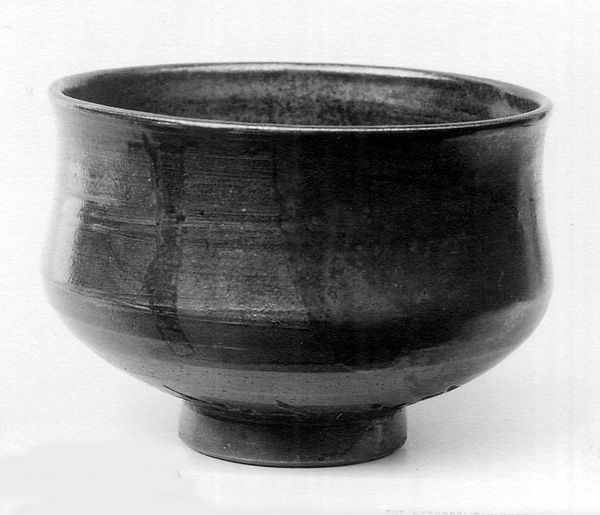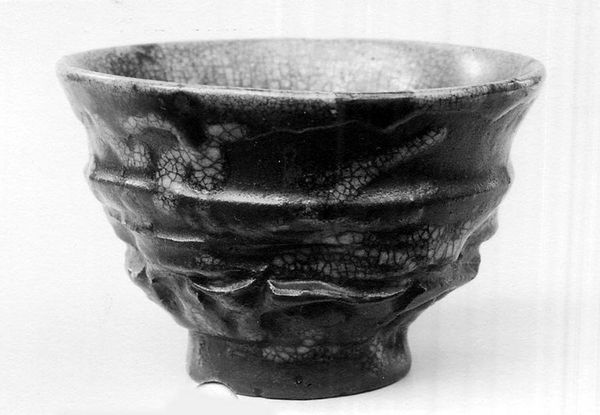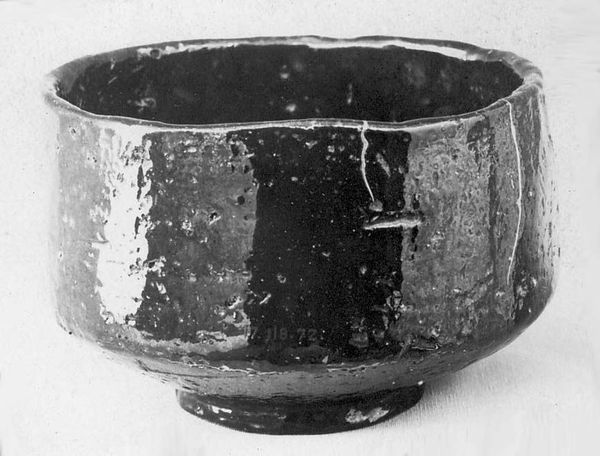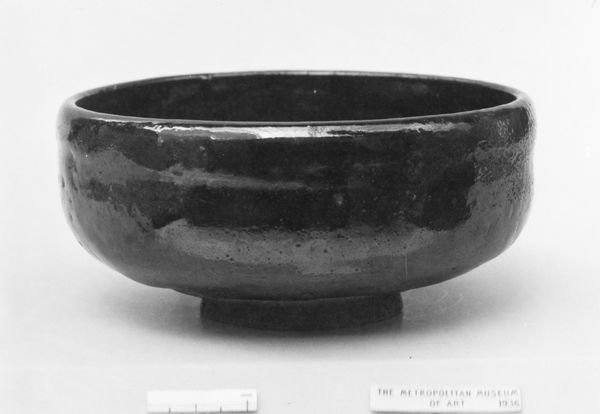
tempera, ceramic
#
tempera
#
asian-art
#
ceramic
Dimensions: H. 3 in. (7.6 cm); Diam. 4 1/4 in. (10.8 cm)
Copyright: Public Domain
Curator: Standing before us is a seemingly simple object: a teabowl created by Nin'ami Dōhachi (Takahashi Dōhachi II) sometime between 1840 and 1860. It's currently held at the Metropolitan Museum of Art. Editor: My first impression is of utter tranquility. The muted tones, the rough texture, it’s a bowl meant to be held, used, contemplated. It has a profoundly wabi-sabi feel, doesn't it? Curator: Precisely. This aesthetic – embracing imperfection – is central to the symbolism within Japanese tea culture. The unevenness is not a flaw, but rather it reminds us of nature, age, and the passage of time, imbuing even mundane tasks with meaning. Editor: I'm fascinated by how the artist coaxed such texture from what appears to be relatively simple ceramic work. Look at the variations in glaze, the subtle pooling and thinness suggesting a deeply layered and considered process. Was it hand-thrown or molded, I wonder? It suggests a great deal of control married with chance effects born in the kiln. Curator: The tea bowl as an object is deeply ingrained with symbolism. The very act of preparing and sharing tea speaks of ritual and intention. The tea ceremony embodies respect, purity, tranquility, and harmony, values reflected in the vessel itself. Editor: To me, it is amazing how much meaning and thought are embedded in something as commonplace as a tea bowl. The hand, the eye, the firing - all these human elements are so much in alignment with their spiritual values, making it incredibly compelling for viewing even centuries after. The social implications are also striking—the democratization of this art makes this an act of living culture. Curator: It’s a testament to the enduring power of art objects, where utility meets spirituality. It transcends being a mere vessel and evolves into a cultural emblem. Editor: Absolutely. It goes far beyond mere craftsmanship. I think its power lives in this delicate tension of function and symbol, process and design.
Comments
No comments
Be the first to comment and join the conversation on the ultimate creative platform.
